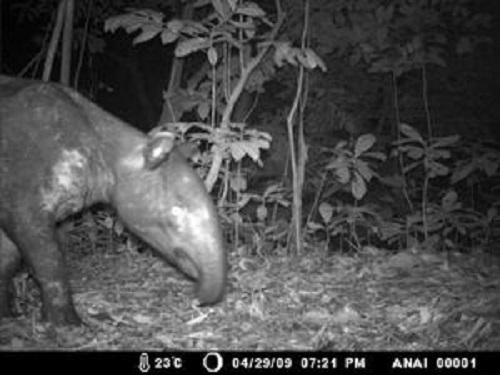Wilson Novarino
Other projects
21 Jan 2004
Population Monitoring and Study of Daily Activities of the Malayan Tapir (Tapirus indicus) through the Use of the Camera Trapping Technique in Taratak Forest Reserve, Sumatra, Indonesia
5 Dec 2006
Population Monitoring and Conservation of Malayan Tapir in Taratak Forest Reserve, Sumatra
Project proposed is expanded of previous Malayan tapir monitoring studies that were supported by Rufford Small Grant and other donors. Camera traps will be operated on four conservation areas which not yet surveyed on previous studies.

Malayan tapir categorized as Endangered by IUCN (2008). In contrast with others tapir species in Neotropical that have been well-studied, information on basic ecological needs of Malayan tapir remain unknown and research into the natural history of this species is listed as priority by the IUCN/SSC Tapir Specialist Group.

The problem designing conservation action of Malayan tapir in Sumatra is that in many parts the Malayan tapir distributed outside or in small protected areas. Further conservation action of tapir in Sumatra should considering on population that occupy those areas
There are two main activities that will be conducted, first monitoring of Malayan tapir and other wildlife in the study area, secondly is conservation awareness.
- Monitoring of Malayan tapir will conducted by using camera trapping. During the study any tracks will measured, photographed and cast. Dung also will collect for food analysis and sampling for genetic analysis.
- Conservation awareness program will be conducted by:
a. Book publishing: the contents will consist of how to identify, recorded a mammals track, technique inventories such as line transect, camera trap techniques, how to use GPS and distribution mapping, pictorial guide for large mammals in Sumatra and fund raising.
b. Training: Three days conservation camp will conduct which targeted to senior high school and undergraduate students and forest rangers. Participants will be introduced with conservation issues and field techniques. Teachers also will invite to involve. Bests participants will involved in our monitoring program.
c. Public campaign: Campaign will be conducted by making calendar by using some picture from previous studies, and short notes about conservation. We also will make a talk show in local television; make a column in local newspaper.